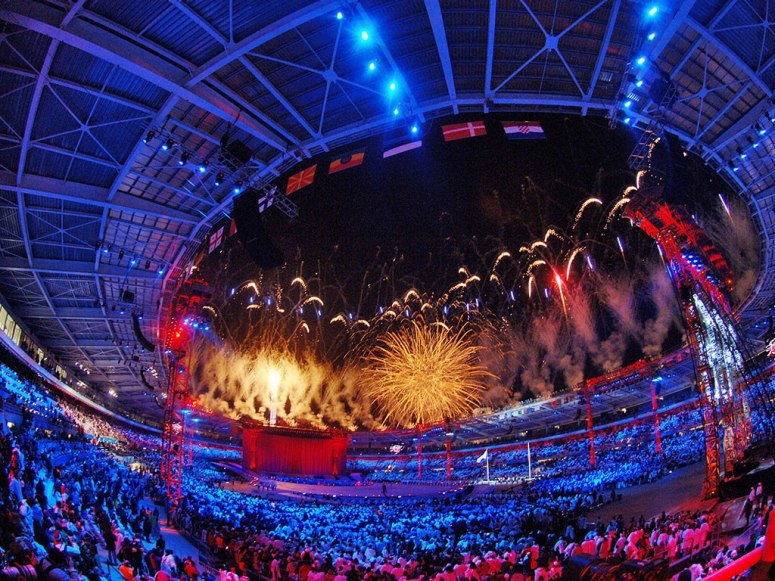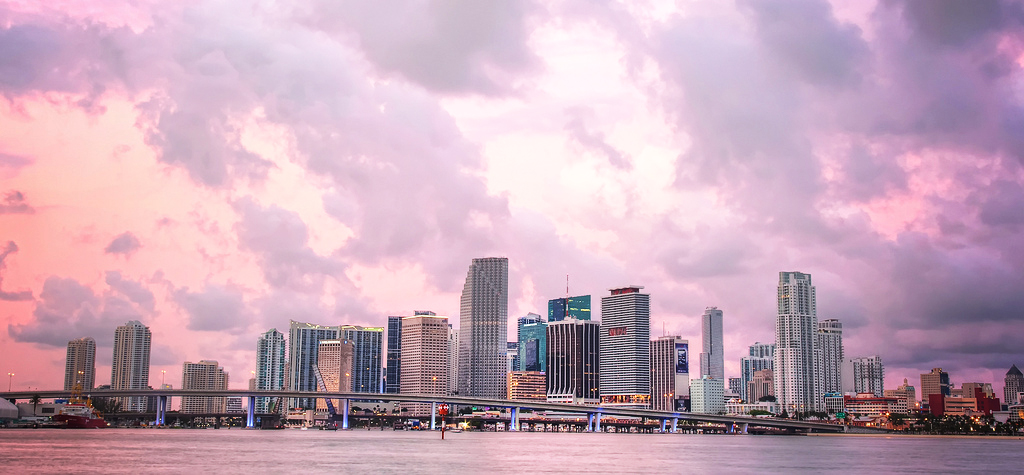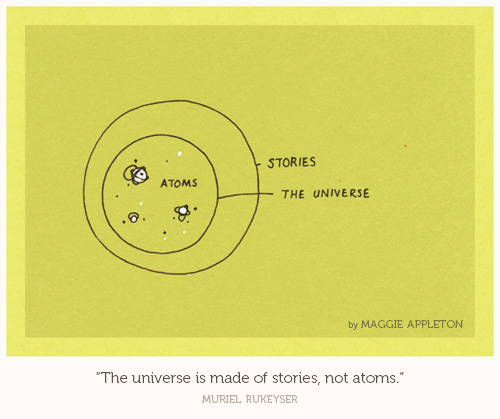Sodexo Named a Top Company for Executive Women
Congratulations to Sodexo, one of our Global Partners, for inclusion on the “2014 NAFE Top 50 Companies for Executive Women” list! The National Association of Female Executives‘ list “recognizes American corporations that have moved women into top executive positions and created a culture that identifies, promotes and nurtures successful women.”
“Sodexo is proud to be recognized by NAFE as one of the Top 50 companies for women executives,” said Steve DiPrima, president of leisure services at Sodexo. “It further validates our commitment to fostering diversity and inclusion throughout our teams while also providing opportunities for professional development and growth.”
Key stats about this year’s list, according to the NAFE Executive Summary, include
- Twenty-eight percent of executive officers at the NAFE Top 50 are women, up from 25 percent last year and 22 percent in 2012.
- Women represent 35 percent of the top 10th of earners at the NAFE Top 50 Companies, and a full two-thirds at the NAFE Top 10 Nonprofit Companies.
- Female participation in advancement programs increased significantly at the NAFE Top 50 this year, with almost a third (32 percent) of women using management/leadership training and mentoring programs, and 64 percent of women participating in career counseling.
- Ninety-six percent of the NAFE Top 50 Companies now offer job rotation programs, compared with 80 percent last year; 60 percent support sponsorship programs, up from just 42 percent in 2013.
This is Sodexo’s third year on the list, and of the company’s total employees, 59 percent are women. Once again, congratulations!
(Image: Sodexo Group Media Library/Stéphane REMAEL)
Industry News Weekly Roundup
There was a lot of news this past week you may have missed. Here are some headlines that caught our eyes.
Vintage Photos: The Winter Olympics Through the Ages
—Condé Nast Traveler
“The Winter Olympics in Sochi are on everyone’s mind right now, but we’re taking a trip back through Winter Olympics of years past, thanks to these charming vintage photos.”
Madison House Presents Joins AEG Live
—CelebrityAccess
“AEG Live has announced the acquisition of festival, touring, and special events production company Madison House Presents. The deal will see Madison House Presents’ principal partners Don Sullivan, Mike Luba and Jeremy Stein joining AEG.”
A New Approach To Improve Networking at Conferences
—Event Manager Blog
“Stimulating your audience to meet new peers and matching the expert with the non-expert leads to more effective and satisfactory meeting experiences.”
Japanese Companies Testing 360-degree VR Broadcasts for Live Events
—Engadget
“Users can move their HMD [head-mounted displays] around to shift their view, and the cloud processes and machinations aim to maximize stream quality for where (and on what) you’re viewing, ‘as if you’re really there.'”
Storytelling Lessons from World Wrestling Entertainment
—Harvard Business Review
“For anyone in entertainment, marketing, or storytelling trying to understand the way a company should (or should not) interact with its fan base, this is the bout for you.”
(Image: ITAR-TASS Photo Agency/Alamy)
Beckham to Take His Talents & New Stadium to South Beach
David Beckham’s recent announcement of plans to launch a new MLS soccer club in downtown Miami is raising hopes, doubts, and questions about the details of his plan. Included in the mix is the mention of a new stadium as a part of the launch. In the press conference on Wednesday, Beckham mentioned that the new stadium would be privately funded, addressing the known issue of Miami-Dade County Mayor Carlos A. Gimminez opposing the public funding of private sports venues.
As reported by Nick Madigan with the New York Times, “In an interview after the news briefing, Don Garber (MLS Commissioner) said that in the last month or so he had personally looked at three properties in downtown Miami that might be suitable stadium sites for Beckham’s team. ‘We want that stadium to be downtown,’ Garber said, mentioning in particular a site in Miami’s seaport near the arena where the NBA’s Miami Heat play.”
There is at least one interesting idea for a location floating around in Miami. It has been closed since Hurricane Andrew in 1992, but the historic Miami Marine Stadium at one time played host to premier boat racing; floating-stage concerts by Queen, The Beach Boys, Steppenwolf, Ray Charles, and Gloria Estafan; and perhaps most famously the Live at The Bay video recorded during a two-day Jimmy Buffett show in 1985. Jimmy Buffet joins the ranks of many that want to see the stadium restored as an active Miami venue, including the Friends of Miami Marine Stadium, and a group of soccer fans that would love to see a soccer pitch floating out where the stage once stood.
Is the Miami Marine Stadium a possibility? Who knows, but having a spectacular venue does seem to be a top priority in this latest effort to prove that MLS soccer can thrive in the Miami market.
The Importance of a Weather Preparedness Plan
The recent winter storm in Atlanta was a trying time for residents and visitors, such as the more than 1,100 exhibitors and 25,000 attendees at the International Production & Processing Expo (IPPE) at the Georgia World Congress Center (GWCC), January 28-30. However, a well thought-out weather preparedness plan proved to mitigate problems.
“The winter storm presented us with some challenges staffing the event,” said IAVM member Patrick Skaggs, assistant general manager at GWCC. “We had over 100 employees stay overnight on rotating shifts to ensure that the sidewalks and roadways in and around our campus were cleared. We also had to perform all of our regular duties in cleaning and converting almost three million square feet of space that the event used within the facility. These monumental challenges would have been impossible for us to take on without the team members and equipment from the Georgia Dome and Centennial Olympic Park (also managed by the GWCC Authority).”
An “Inclement Weather Plan” was created more than three years ago, Skaggs said, and it’s an extension of the venue’s “Emergency Operating Procedures.”
“The plan came in very useful during this weather event, but it’s one of those documents that is constantly being improved,” he said.
At the time of the interview, the event was still moving out of the facility, so a comprehensive debrief hadn’t been conducted yet. The main goal, though, was to ensure a great guest experience, and Skaggs said he’s proud of the GWCC team for doing whatever was necessary to provide “best in class” service to attendees.
“I’m very pleased with how our team handled this winter storm and IPPE in general,” he said.
Do you have a current weather preparedness plan in place? How often is it updated? Please contribute to the conversation in the comment section below.
(photo credit: jasonstaten via photopin cc)
Why Telling Your Story is Important
It’s National Storytelling Week…well, in the U.K. at least. Still, whether you’re celebrating it here in the U.S., across the Atlantic, or anywhere else in the world, storytelling is an important part of the human psyche. It’s how we convey information, entertain each other, and comfort ourselves. Even in this age of listicles, storytelling is what drives creation and the desire for immortality . We’re drawn to stories in all types of mediums.
For example, a Johns Hopkins researcher conducted a two-year study of 108 Super Bowl ads and found that people rated commercials with dramatic plotlines (e.g., exposition, rising action, climax, denouement) higher than those without storytelling elements.
“People think it’s all about sex or humor or animals, but what we’ve found is that the underbelly of a great commercial is whether it tells a story or not,” Keith A. Quesenberry, a lecturer in the university’s Center for Leadership Education in the School of Engineering, told the Hub.
Quesenberry says that when marketers tell a complete story, an ad ranks higher in polls and causes more people to want to view and share it.
Let me take this chance to share with you, then, a bit of my editorial philosophy for FM magazine. As you may have guessed, it’s rooted in storytelling, and it’s what I wrote about in the Opening Words column in our latest issue. Too often, association magazines simply want to impart information and they neglect the humanity of the organizations. It doesn’t have to be that way. Association magazines can hold their own against time-honored, narrative-driven publications such as Harper’s, The New Yorker, or Wired, and my plan is to hold FM to that standard. If we focus on complete storytelling (e.g., exposition, rising action, climax, denouement), we’ll not only have a much richer magazine but a more memorable one, too, one that you can’t wait to share with your family, friends, co-workers, or employees. It’s an ambitious goal, sure, and I believe we can achieve it together.
“Consumers want infotainment, not information,” said author Gary Vaynerchuk in Jab, Jab, Jab, Right Hook. “Information is cheap and plentiful; information wrapped in story, however, is special.”
As I concluded in my column, let’s together show how special the venue management industry really is. It’s definitely a great story to tell.
If you have a story idea, please feel free to email it to me at jason.hensel@iavm.org.
(photo credit: Eigappleton via photopin cc)
Do you want to receive a Front Row News weekly digest?
Categories
- Allied (861)
- Architecture (147)
- Arenas (747)
- Career (897)
- Convention Centers (895)
- Education (623)
- Events (1,544)
- Food & Beverage (193)
- Foundation (113)
- Guest Experience (1,496)
- Industry News (2,270)
- Leadership (1,888)
- Marketing (150)
- Membership (2,000)
- Music (213)
- Performing Arts Centers (454)
- Professional Development (409)
- Research (127)
- Safety & Security (442)
- Sports (763)
- Stadiums (608)
- Student (159)
- Technology (516)
- Ticketing (92)
- Touring (82)
- Trends (364)
- Uncategorized (743)
- Universities (218)
- Video (25)
- Young Professional (198)
Twitter Feed
- Twitter feed loading
Recent Posts
- Venuworks and ATG Entertainment Selected to Manage Fresno Convention and Entertainment Center
- Seattle Convention Center Announces Strategic Leadership Appointment and Growth Initiatives for 2026
- Peggy Daidakis Humbly Made Convention Center History
- Welcome to Our Newest Members
- New Member Benefit! IAVM Partners with Advantage Training to Elevate Staff Readiness and Guest Experience
Categories
- Allied
- Architecture
- Arenas
- Career
- Convention Centers
- Education
- Events
- Food & Beverage
- Foundation
- Guest Experience
- Industry News
- Leadership
- Marketing
- Membership
- Music
- Performing Arts Centers
- Professional Development
- Research
- Safety & Security
- Sports
- Stadiums
- Student
- Technology
- Ticketing
- Touring
- Trends
- Uncategorized
- Universities
- Video
- Young Professional
Archives
- December 2025
- November 2025
- October 2025
- September 2025
- August 2025
- July 2025
- June 2025
- May 2025
- April 2025
- March 2025
- February 2025
- January 2025
- December 2024
- November 2024
- October 2024
- September 2024
- August 2024
- July 2024
- June 2024
- May 2024
- April 2024
- March 2024
- February 2024
- January 2024
- December 2023
- November 2023
- October 2023
- September 2023
- August 2023
- July 2023
- June 2023
- May 2023
- April 2023
- March 2023
- February 2023
- January 2023
- December 2022
- November 2022
- October 2022
- September 2022
- August 2022
- July 2022
- June 2022
- May 2022
- April 2022
- March 2022
- February 2022
- January 2022
- December 2021
- November 2021
- October 2021
- September 2021
- August 2021
- July 2021
- June 2021
- May 2021
- April 2021
- March 2021
- February 2021
- January 2021
- December 2020
- November 2020
- October 2020
- September 2020
- August 2020
- July 2020
- June 2020
- May 2020
- April 2020
- March 2020
- February 2020
- January 2020
- December 2019
- November 2019
- October 2019
- September 2019
- August 2019
- July 2019
- June 2019
- May 2019
- April 2019
- March 2019
- February 2019
- January 2019
- December 2018
- November 2018
- October 2018
- September 2018
- August 2018
- July 2018
- June 2018
- May 2018
- April 2018
- March 2018
- February 2018
- January 2018
- December 2017
- November 2017
- October 2017
- September 2017
- August 2017
- July 2017
- June 2017
- May 2017
- April 2017
- March 2017
- February 2017
- January 2017
- December 2016
- November 2016
- October 2016
- September 2016
- August 2016
- July 2016
- June 2016
- May 2016
- April 2016
- March 2016
- February 2016
- January 2016
- December 2015
- November 2015
- October 2015
- September 2015
- August 2015
- July 2015
- June 2015
- May 2015
- April 2015
- March 2015
- February 2015
- January 2015
- December 2014
- November 2014
- October 2014
- September 2014
- August 2014
- July 2014
- June 2014
- May 2014
- April 2014
- March 2014
- February 2014
- January 2014
- December 2013
- November 2013
- October 2013
- September 2013
- August 2013
- July 2013
- June 2013
- May 2013
- April 2013
- March 2013
- February 2013
- January 2013
- May 2012
- March 2012
- December 2011
- November 2011
- October 2011
Recent Comments
- Frank Bradshaw, Ph.D., CVE on John Meyer, CVE, a Tireless Advocate of Certification for Venue Professionals, Has Died
- Neil Sulkes on Hilary Hartung, Friend to Many in Venue Marketing, Has Left Us
- Jason Parker, CVE on The Devastation of Hurricane Helene and How We Can Support One Another
- Larry Perkins on Touhey Testifies Against Speculative Ticketing Before Congressional Subcommittee
- Peter Secord on Major Players for Planned Elkhart Amphitheater Were in the Mix at VenueConnect






